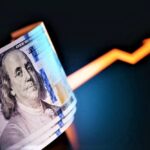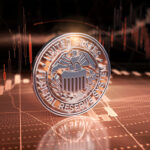Risk Appetite Rises, Gold Loses Shine
Gold prices retreated during Tuesday’s Asian session as investor risk appetite picked up on renewed optimism over trade developments and a potential ceasefire in the Russia-Ukraine war. The precious metal, often a refuge in uncertain times, has struggled to maintain traction above the $3,200 level despite several factors that would typically support safe-haven flows, including a weaker US Dollar and dovish Fed expectations.
Global equity markets remain buoyant following news of a 90-day trade truce between the US and China, overshadowing the impact of Friday’s unexpected downgrade of the US government’s credit rating by Moody’s. That downgrade, from AAA to Aa1, cited concerns about the ballooning US fiscal deficit and long-term debt sustainability. However, rather than triggering panic, the downgrade has been largely brushed aside by investors focusing on positive trade developments.
Soft Dollar, But Gold Fails to Benefit
Even as the US Dollar Index (DXY) hovers near a one-week low, gold prices have not been able to capitalize on the greenback’s weakness. Market expectations for at least two rate cuts by the Federal Reserve in 2025 have intensified following last week’s lackluster US inflation and retail sales reports. Lower interest rates typically reduce the opportunity cost of holding non-yielding assets like gold, thereby supporting prices.
However, the lack of momentum in XAU/USD suggests that traders are not yet convinced of gold’s near-term bullish case. The precious metal remains trapped in a consolidation phase, with price action signaling indecision. A breakdown below $3,180 could expose the metal to further losses, while sustained moves above $3,220 would be required to reignite bullish momentum.
Fed Commentary Muddies the Waters
Several key Federal Reserve officials delivered mixed messages, further clouding the outlook for monetary policy. Atlanta Fed President Raphael Bostic expressed skepticism over the pace at which inflation is returning to target, hinting at a more conservative path to rate cuts. He emphasized that inflation expectations are “moving in a troubling way” and leaned toward only one rate cut this year.
In contrast, New York Fed President John Williams struck a more balanced tone. He acknowledged that the US economy remains in a good place, though he noted some forward-looking indicators of concern. Meanwhile, Fed Vice Chair Philip Jefferson highlighted the potential inflationary impact of tariffs but stressed the need to avoid overreacting to temporary price shocks.
Minneapolis Fed President Neel Kashkari also added to the cautious tone, pointing out the uncertainty created by President Trump’s trade policies. Kashkari reiterated the Fed’s wait-and-see approach as it monitors both inflation dynamics and the broader economic fallout from ongoing trade disputes.
Geopolitics Ease as Ceasefire Talks Begin
Geopolitical tensions, typically a strong driver for gold, seem to be losing their grip on market sentiment. Although the situation in Gaza escalated with Israeli forces launching a new operation in Khan Yunis, broader market reaction remained muted.
More significantly, US President Donald Trump’s announcement that Russia and Ukraine have agreed to start ceasefire negotiations has added another layer of calm to the geopolitical landscape. Trump claimed on his Truth Social platform that talks would begin shortly, following separate discussions with the leaders of both nations. While the conditions of these talks remain uncertain, even the hint of a peace dialogue has pressured gold lower as geopolitical risk premiums unwind.
Rate Cut Bets Remain, But Gold Unmoved
Market pricing continues to reflect a strong possibility of at least two rate cuts by the Fed in 2025. Futures markets are increasingly aligning with this view, particularly after recent economic data pointed to cooling consumer spending and waning inflation pressures. Yet, despite this dovish tilt, gold has remained relatively range-bound.
This disconnect highlights how gold is currently caught between competing forces—monetary easing on one side and rising risk appetite on the other. Investors are seemingly more inclined to allocate capital toward risk assets like equities amid easing trade tensions, thereby reducing demand for the traditional safe-haven appeal of bullion.
Market Sentiment Overrides Traditional Drivers
Another layer of complexity is added by the disconnect between gold and traditional drivers like the USD or Treasury yields. Historically, a weaker dollar and falling yields would lift gold, but that inverse relationship has weakened amid shifting investor psychology. The prevailing market mood now seems to weigh more heavily on gold than fundamental factors.
As equity indices globally continue to rise, especially on Wall Street, investors are displaying a “risk-on” mindset. This sentiment is often gold’s worst enemy, as it leads to capital moving away from safety trades toward growth and yield opportunities.
Technical Outlook: Watch the $3,180-$3,220 Range
From a technical standpoint, the XAU/USD pair remains stuck in a narrow trading band. Key resistance lies near the $3,220 level, which bulls must clear to spark a breakout. On the downside, support around $3,180 is holding for now, but a decisive break below could accelerate declines toward $3,140 or even $3,100.
Momentum indicators on the daily chart appear neutral to slightly bearish, reinforcing the view that gold lacks a clear directional bias for now. Until a breakout from this range materializes, short-term traders may continue to buy dips and sell rallies, keeping volatility compressed.
No Major US Data, Focus Shifts to Fed Speeches
With no high-impact US economic releases scheduled for Tuesday, traders will turn their attention to speeches from Fed officials for cues on monetary policy. Any comments that lean more dovish than expected could offer temporary support to gold, while hawkish rhetoric could trigger fresh selling.
At the same time, developments around the Russia-Ukraine ceasefire and ongoing US-China trade negotiations will continue to shape global risk sentiment. These geopolitical and macroeconomic narratives may play a more dominant role in the absence of hard economic data.
[faq-schema id=”39621″]









